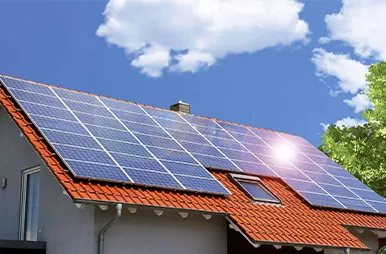Advancements in Bifacial Photovoltaic Technology for Enhanced Energy Generation Efficiency
Bifacial Photovoltaic Modules A Sustainable Innovation in Solar Energy
The global surge in renewable energy adoption has ushered in innovative technologies designed to enhance the efficiency and effectiveness of solar energy systems. One such innovation is bifacial photovoltaic (PV) modules, which represent a significant advancement in solar technology. Unlike traditional monofacial panels that capture sunlight only from one side, bifacial modules are engineered to absorb sunlight from both sides, maximizing energy production and contributing to a more sustainable energy landscape.
Understanding Bifacial Technology
Bifacial PV modules consist of solar cells sandwiched between two layers of glass or transparent materials. This unique design allows them to capture sunlight from the front and rear sides. The rear side can harness light that is reflected off surfaces such as the ground, rooftops, or other reflective materials. This ability to utilize light from multiple angles makes bifacial modules particularly efficient in scenarios where the surrounding environment promotes reflection, which can occur in snowy, sandy, or even water-covered areas.
Efficiency and Performance
The efficiency of bifacial solar panels is one of their most significant advantages. Depending on factors such as location, angle, and ground reflectance, bifacial modules can achieve a performance gain of 10% to 30% compared to their monofacial counterparts. In optimal conditions, users can expect increased energy yield, which ultimately leads to a higher return on investment. This enhanced performance is particularly beneficial for large-scale solar farms where maximizing energy output directly impacts profitability.
Installation and Design Flexibility
Bifacial modules are not only efficient; they also offer significant installation flexibility. They can be mounted in various configurations, including elevated structures that allow sunlight to reach the rear side of the panels, further enhancing their energy capture capabilities. This versatility makes them an attractive option for diverse applications, from large utility-scale installations to residential rooftops.
Moreover, the transparent back of bifacial modules allows for aesthetic integration into architectural designs. This innovation caters to the growing demand for integrating renewable energy solutions into building designs without compromising aesthetic appeal.
bifacial photovoltaic modules

Environmental Impact and Sustainability
The transition to bifacial photovoltaic technology aligns with the global movement towards sustainability and reducing carbon footprints. By boosting the efficiency of solar energy systems, bifacial modules contribute to less land being required for solar farms, reducing habitat disruption and land use impacts. Additionally, the longer lifecycle of bifacial modules, attributed to their durable design, means that they can generate clean energy over an extended period compared to traditional panels.
Furthermore, the improvement in the energy yield of bifacial panels reduces the need for additional electricity generation from fossil fuels, which is crucial in the fight against climate change.
Challenges and Considerations
While bifacial photovoltaic technology offers numerous advantages, developers and users should also consider potential challenges. For instance, the installation site must have appropriate ground conditions to maximize rear-side sunlight reflection. Certain geographical locations may present obstacles due to shading or the nature of the ground material.
Moreover, the initial cost of bifacial panels can be higher than that of conventional solar modules. However, considering the long-term efficiency gains, these costs may be offset over time.
Conclusion
Bifacial photovoltaic modules symbolize a promising step forward in solar energy technology. By leveraging sunlight from both sides, these innovative solar panels improve efficiency and reflect a growing commitment to sustainable energy solutions. As technology advances and costs continue to decrease, bifacial modules could play a crucial role in the global transition towards a cleaner and more sustainable energy future. With their growing adoption, bifacial PV modules not only advance energy technologies but also carve a path toward a more resilient and environmentally-friendly power grid.
-
String Solar Inverter: The High-Efficiency Solution for Smart Solar EnergyNewsJul.14,2025
-
Revolutionizing Rooftop Energy with the Power of the Micro Solar InverterNewsJul.14,2025
-
Power Independence with Smart Off Grid Solar Inverter SolutionsNewsJul.14,2025
-
On Grid Solar Inverter: Powering the Future with Smart Grid IntegrationNewsJul.14,2025
-
Monocrystalline Solar Panels: High-Efficiency Power for the Future of Clean EnergyNewsJul.14,2025
-
Bifacial Solar Panel: A Smarter Investment for Next-Generation Energy SystemsNewsJul.14,2025







